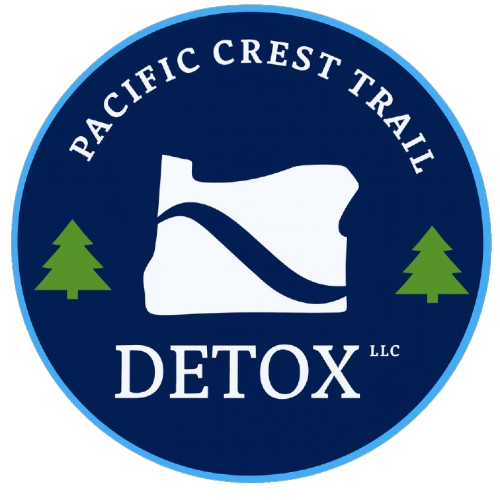When mental health and substance use collide, a treatment plan that integrates both is essential. For individuals facing the complex reality of dual diagnosis, partial hospitalization for co-occurring disorders offers an effective level of care that addresses both challenges at the same time.
For individuals navigating the complex realities of dual diagnoses, this level of care offers hope, stability, and real progress.
For many individuals, substance use begins as an attempt to manage or suppress symptoms of mental health issues. In turn, the neurochemical and behavioral effects of substances can intensify mental health symptoms. This makes both disorders more severe over time.
Below are some of the most common combinations of mental health disorders and SUDs:
Initially, alcohol can create a temporary sense of relief or distraction. However, as consumption continues, it further depresses the central nervous system (CNS), worsening symptoms such as:
This comorbidity is especially prevalent among those who have experienced severe trauma, including:
Some examples of these medications are:
As tolerance builds, individuals may increase their dosage without medical guidance, eventually leading to addiction. Withdrawal symptoms, which can include heightened anxiety and insomnia, further entrench the cycle of misuse.
A PHP for co-occurring disorders offer a comprehensive healing environment that supports long-term recovery and personal growth.
Below are some of the key benefits that make these programs a valuable treatment option:
In partial hospitalization for co-occurring disorders, individuals receive simultaneous care for both their mental health conditions and substance use challenges within a unified clinical team. Psychiatrists, therapists, case managers, and addiction specialists collaborate closely.
This coordinated model eliminates the risks of:
Instead of bouncing between facilities that focus on only one area of concern, participants in a partial hospitalization for co-occurring disorders benefit from a single, comprehensive treatment plan. This fosters more consistent progress across both areas of recovery.
A key benefit of partial hospitalization for co-occurring disorders is the emphasis on daily structure.
Individuals engage in consistent therapeutic schedules that include:
This structure fosters a reliable daily rhythm, which is often missing in the lives of those struggling with dual diagnosis.
By participating in a set routine, individuals begin to develop essential habits, such as:
These foundational routines support mental clarity and emotional regulation, helping individuals regain a sense of control in their daily lives.
For many individuals, unresolved grief, chronic stress, or environmental instability lie at the core of their struggles. Without addressing these root causes, lasting recovery becomes difficult to achieve.
Integrated partial hospitalization for co-occurring disorders goes beyond managing surface-level symptoms by identifying and treating these underlying factors.
Partial hospitalization for co-occurring disorders plays a significant role in improving overall quality of life.
As individuals learn to manage both conditions in a safe environment, they begin to:
Ultimately, they gain the tools needed to thrive beyond treatment and into everyday life.
Here are the core components that support integrated care in partial hospitalization for co-occurring disorders:
One of the first steps in partial hospitalization for co-occurring disorders is a thorough assessment process. This step helps clinicians build a complete picture of an individual’s mental, emotional, physical, and behavioral health.
Initial assessments are conducted by licensed mental health professionals who evaluate:
These evaluations aim to identify underlying mental health conditions and understand how they may be interacting with substance use.
A thorough substance use evaluation plays a vital role in treatment planning.
Medical evaluations are also a vital part of the assessment process.
Physical health concerns can complicate treatment and recovery, particularly when individuals are dealing with:
Physical exams, lab work, and medication history reviews ensure that these medical needs are integrated into the overall treatment plan.
Below are some of the most common medications recommended in partial hospitalization for co-occurring disorders:
Antidepressants are frequently prescribed in partial hospitalization for co-occurring disorders involving mood-related conditions, such as:
In patients recovering from substance use, antidepressants can alleviate withdrawal-related depressive symptoms. By supporting mood regulation, these medications can help improve adherence to the overall treatment plan.
These medications can help manage hallucinations, manic episodes, and severe agitation.
Below are commonly used medications for various SUD in this setting:
Ongoing monitoring is essential to effective medication management in partial hospitalization for co-occurring disorders.
This usually involves evaluation of:
During this process, medications are reviewed regularly to ensure they are producing the intended therapeutic effects.
Beyond medications, partial hospitalization for co-occurring disorders focuses on diverse therapeutic approaches that support long-term healing.
Here are the core therapies commonly used to guide recovery in these programs:
CBT helps individuals identify and reframe harmful thought patterns that often contribute to both mental health symptoms and substance use behaviors.
Through guided sessions, participants learn to:
Therapists use structured exercises and real-world applications to help clients gradually change their thinking. This can lead to more adaptive behaviors and a more stable emotional landscape.
DBT in a PHP setting provides a comprehensive framework that emphasizes both acceptance and change by utilizing the four key techniques, including:
The therapy encourages individuals to acknowledge their current emotional experience while learning techniques to manage it constructively. This dual focus is particularly beneficial for those navigating the complexities of dual diagnosis.
MI helps individuals explore and resolve ambivalence about change. Rather than confronting resistance, MI helps individuals discover their own motivations for change.
Therapists use empathetic listening and strategic questioning to:
This method is especially effective for those who are in the early stages of recovery.
Outdoor adventure therapy adds an experiential dimension to traditional talk therapies.
To foster emotional resilience, confidence, and personal insight, this approach combines:
In a partial hospitalization for co-occurring disorders, adventure therapy might include a range of inclusive and trauma-informed activities such as:
These experiences promote a sense of accomplishment and connection. This helps unlock emotional breakthroughs that are difficult to access in more conventional environments.
Managing stress is vital for individuals facing the dual challenges of mental illness and addiction. A PHP often integrates stress-reduction techniques to support stability and overall well-being.
These exercises may include:
These practices equip individuals with lifelong tools to navigate triggers and cultivate a sense of inner balance.
The program provides the stability and consistency needed for continued healing after detoxification. It serves as a pivotal bridge between inpatient treatment and full reintegration into everyday life by offering clients the tools, insight, and peer support required to build long-term resilience.
PCTD offers a calm, home-like environment that encourages comfort and openness.
Soft furnishings, cozy common areas, and a warm, welcoming ambiance help create a space that feels:
Clients often find that this familiar, less clinical setting reduces anxiety and enhances their willingness to engage in the healing process.
At PCTD, every aspect of care is intentionally crafted to promote:
Clinical interventions are led by experienced professionals who understand both the science and the emotional journey of recovery. At the same time, every client is treated with the respect and dignity essential for healing.
The success of our programs isn’t just measured by numbers; it’s reflected in:
Our integrated approach, combining evidence-based therapy with holistic support, has earned the trust of both individuals and families seeking lasting change.
Group interaction is at the heart of our PHP experience. Clients participate in dynamic group therapy sessions, peer-led discussions, and structured activities that build connection and trust.
These interactions help individuals:
Through connection, clients find the strength to grow, heal, and move forward.






